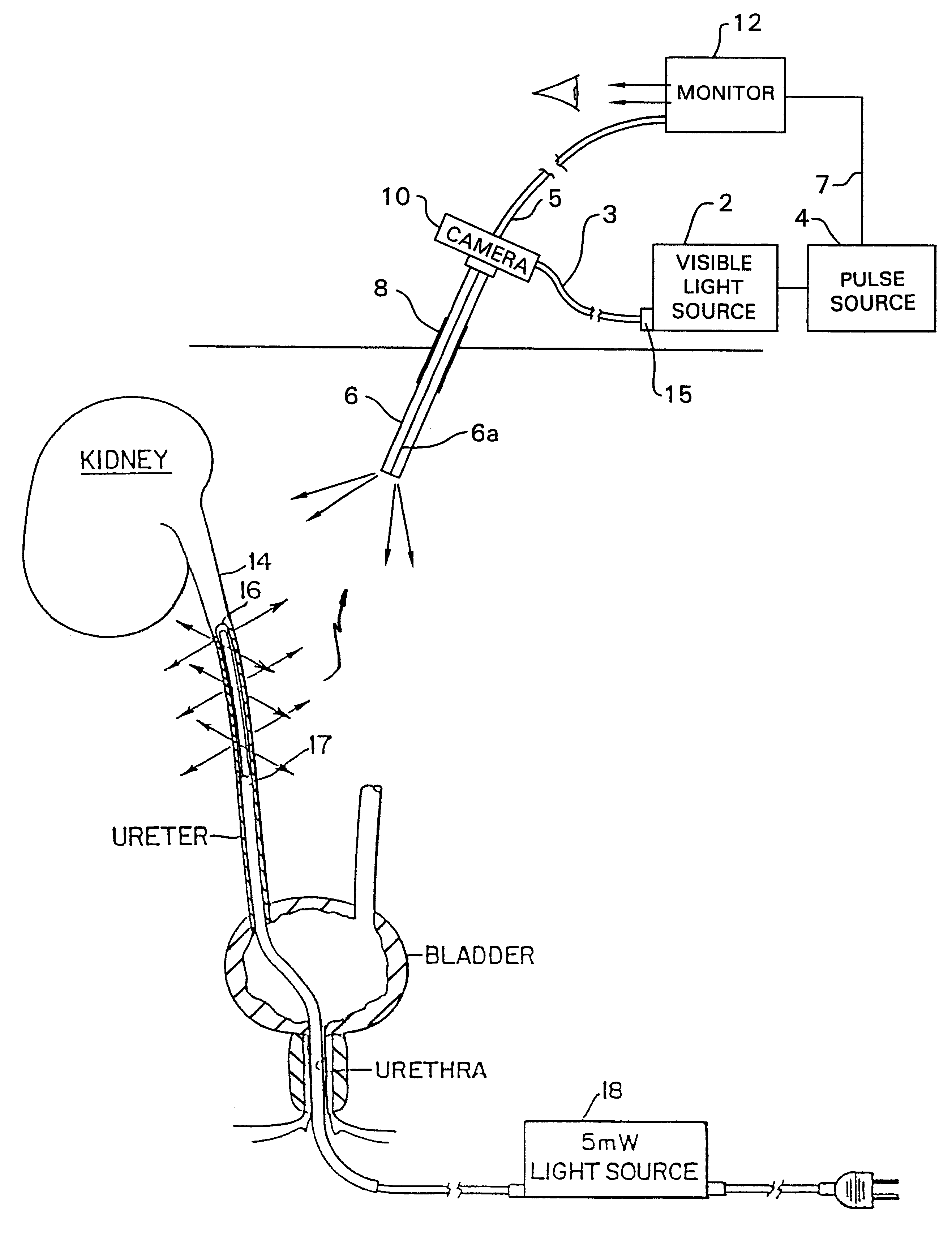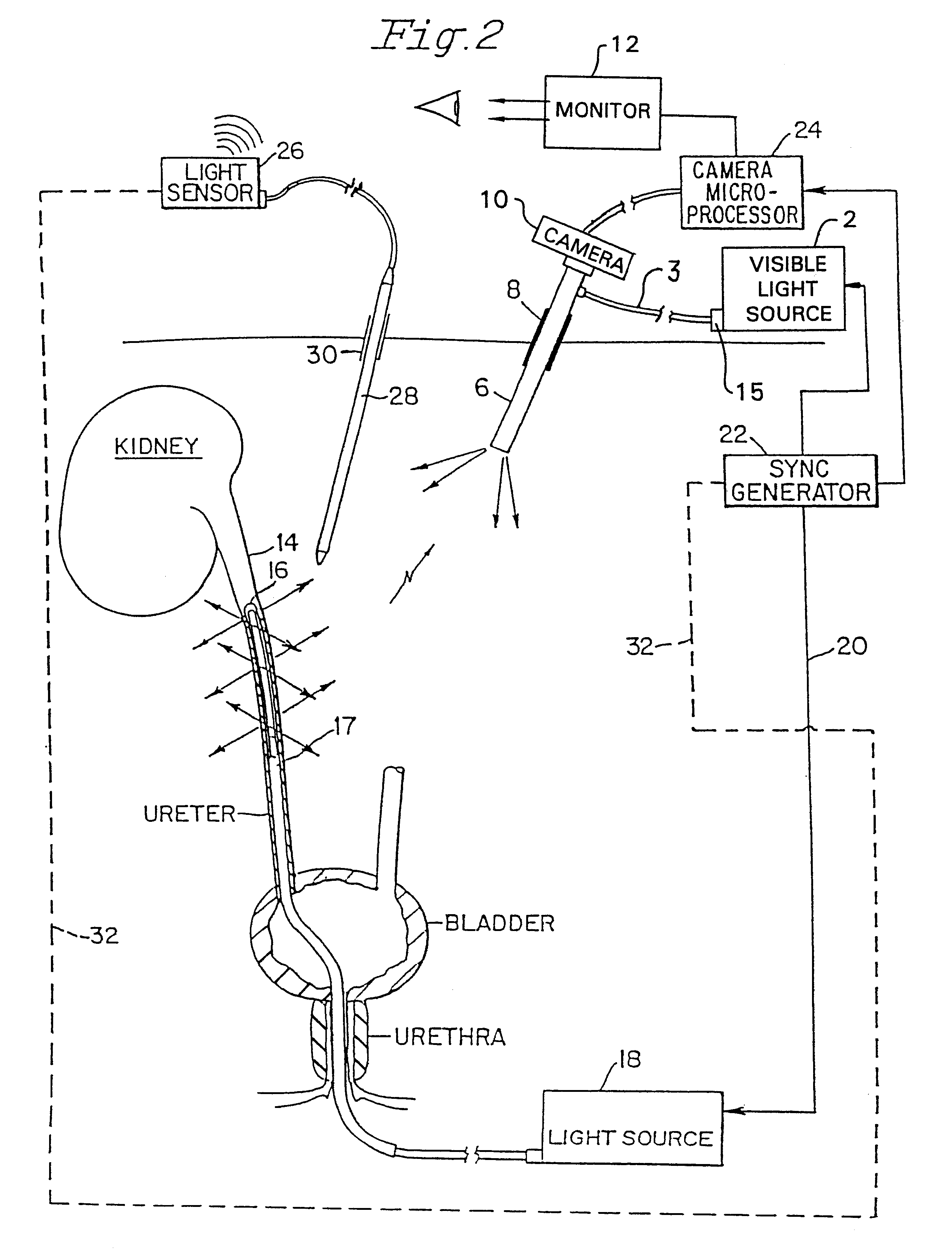Transillumination of body members for protection during body invasive procedures
a technology of body parts and transilluminated ureters, applied in medical science, surgery, diagnostics, etc., can solve the problem that the camera cannot detect light emanating from the transilluminated ureter, and achieve the effect of reducing glar
- Summary
- Abstract
- Description
- Claims
- Application Information
AI Technical Summary
Benefits of technology
Problems solved by technology
Method used
Image
Examples
Embodiment Construction
Referring specifically to FIG. 1 of the accompanying drawings, there is illustrated a diagram of a system employing a pulsed laparoscopic visible light source 2. The source 2 is turned on and off by a source of energizing pulses 4 at a rate that is synchronized with the frame rate of a monitor 12 via lead 7.
The endoscope 6 consists of a lens system surrounded by a fiber optic bundle 6a. The light cable 3 couples the endoscopic light source 2 to the fiber optic bundle 6a of the endoscope. During endoscopic procedures, the surgical field is illuminated using the endoscope 6 coupled to the endoscopic light source 2 via the light cable 3. Specifically, the distal end of the endoscope 6 is located internally of a body in a region to be illuminated. The proximal end of the endoscope 6 has an adapter 51 (FIG. 3) that couples the distal end of the light cable 3 to the proximal end of the internal fiber optic bundle 6a of the endoscope 6. The proximal end of the light cable 3 is coupled to t...
PUM
 Login to View More
Login to View More Abstract
Description
Claims
Application Information
 Login to View More
Login to View More - R&D
- Intellectual Property
- Life Sciences
- Materials
- Tech Scout
- Unparalleled Data Quality
- Higher Quality Content
- 60% Fewer Hallucinations
Browse by: Latest US Patents, China's latest patents, Technical Efficacy Thesaurus, Application Domain, Technology Topic, Popular Technical Reports.
© 2025 PatSnap. All rights reserved.Legal|Privacy policy|Modern Slavery Act Transparency Statement|Sitemap|About US| Contact US: help@patsnap.com



